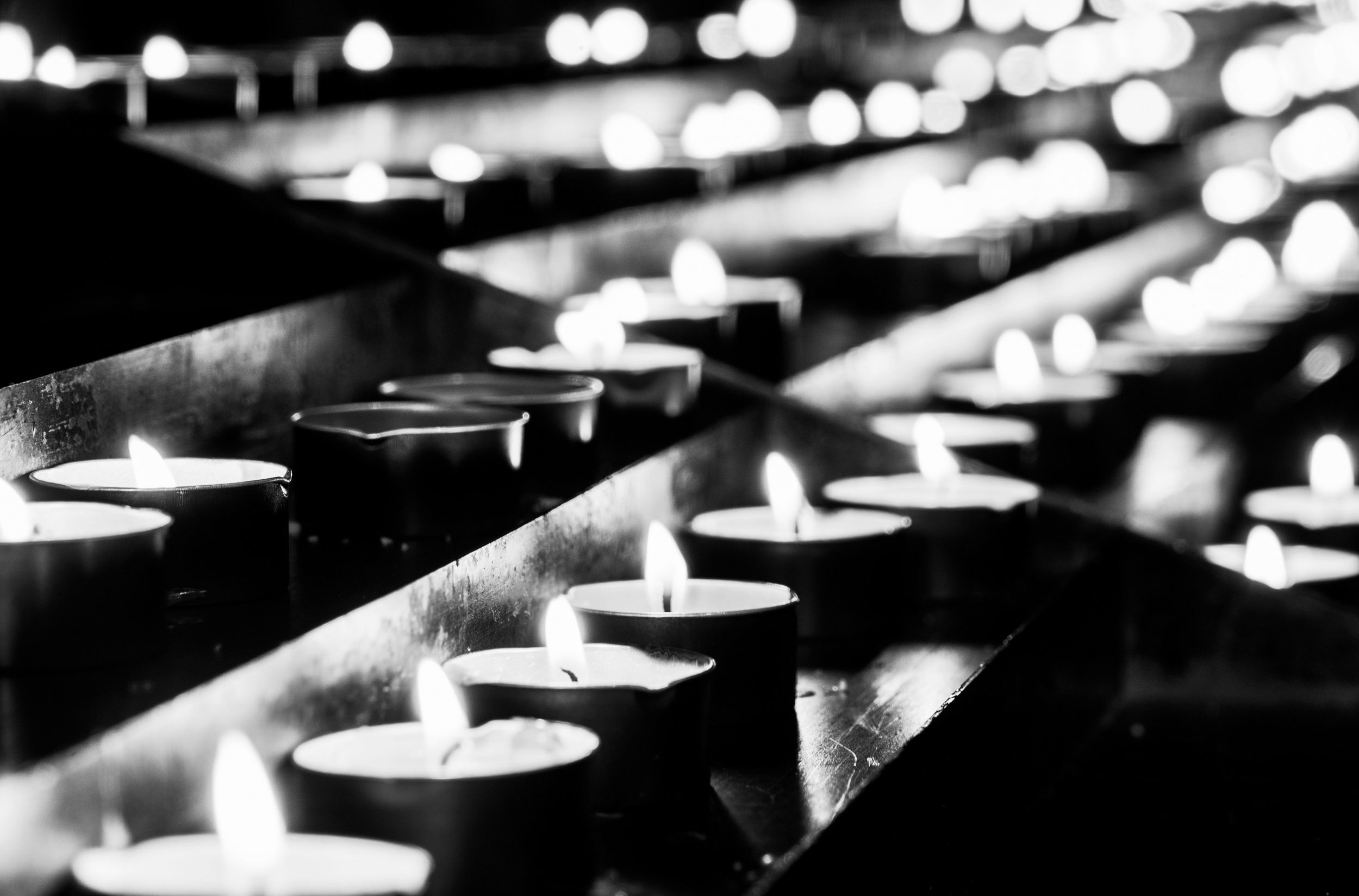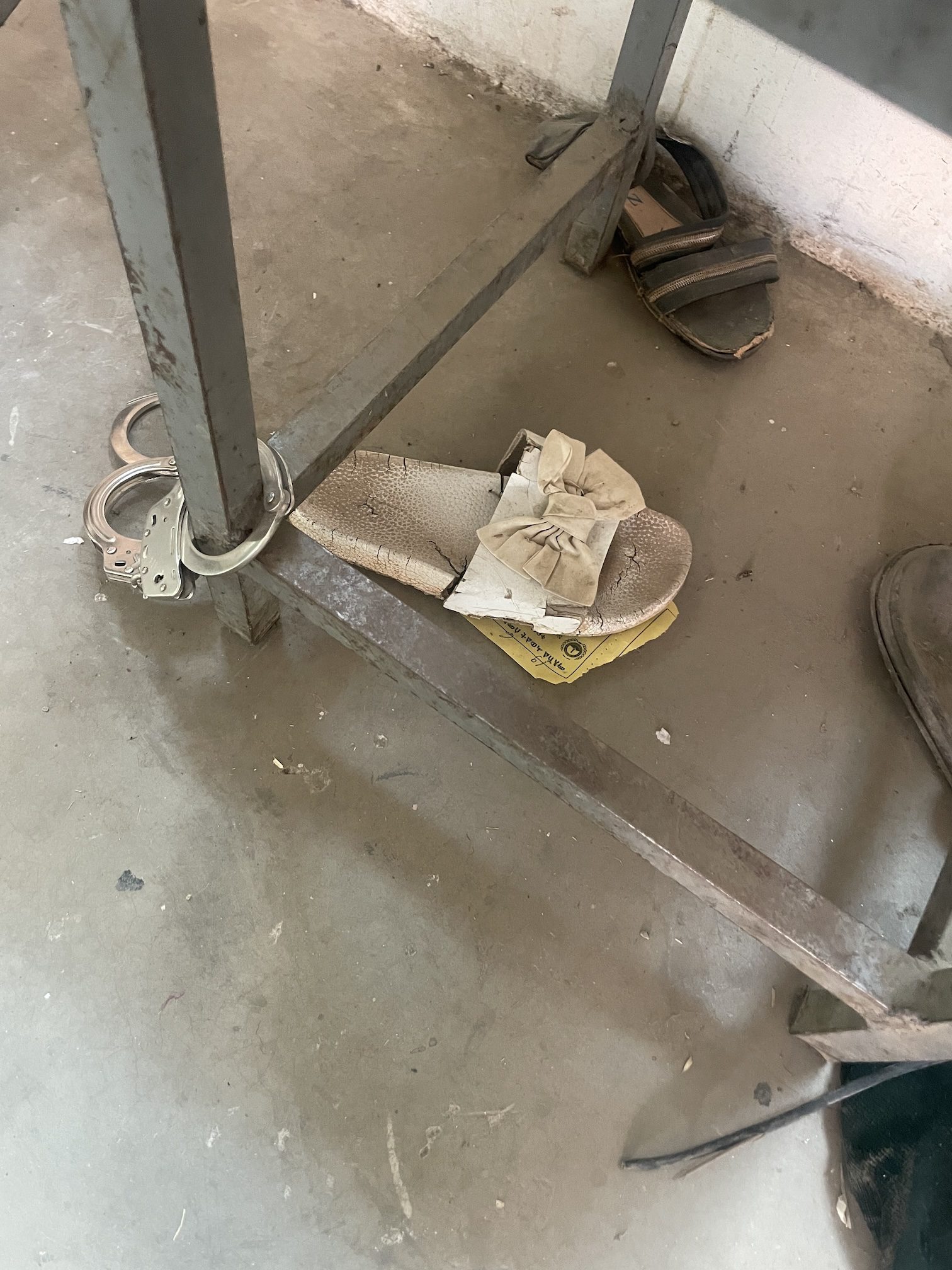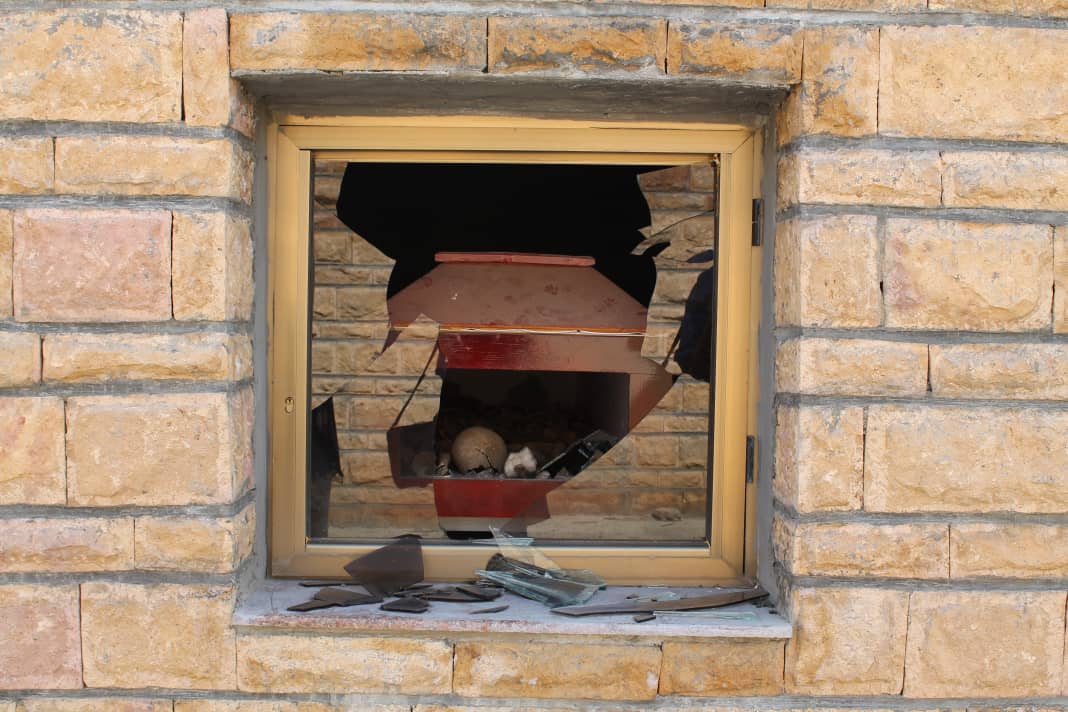“To keep the narratives and to save our history from being told by only one side, this work is very essential…”
– Sana Yazigi
Last week I had the chance to talk with Sana Yazigi about her work as project leader of “Creative Memory of the Syrian Revolution.” Below, you can listen to the entire interview, or read the transcript. In the transcript, you will also find links to some of the music and artwork that Yazigi refers to.
I began by asking her to introduce the project.
Sana: The project is about, like I call it, a memory. What I can tell you is that at the beginning I didn’t know why I called it ‘memory.’ I just called it ‘memory’ and ‘creative memory.’ Of course, ‘creative memory’ because of a mix of things. One of them is because I’m a graphic designer and I have special interest in creative expressions. I was astonished, I always said it, by this huge creativity coming up from all Syrians–ordinary people, artists–and the role and the presence and the representative aspect of art in the social and political issue. And I wanted to do something about it. And then before, just before the revolution and during five years I used to manage a multicultural agenda in Arabic and English, so this helped me, if you want, to imagine this project. I have somehow the know-how.
Many factors played a role in imagining this project and I wasn’t able to do it before I moved to Lebanon because in Syria, I was in the revolution, so I was participating and I had no time to do such a project, you see what I mean? But I was looking, I was hearing, I was following and saying to myself, who will save all this? Especially when the regime started to delete and to erase every word that was written on the murals everywhere in Syria, so I said, if he is erasing words like “freedom” for example, like “we want a better life”, what will he do with all this production?
[ngg src=”galleries” ids=”2″ display=”basic_thumbnail” thumbnail_crop=”0″]All images courtesy of Creative Memory of the Syrian Revolution.
Bridget: Where were you in Syria? Were you in Damascus?
Sana: Damascus, yes, Damascus.
Bridget: When did you move to Beirut, or to Lebanon?
Sana: To Beirut in June 2012.
Bridget: Okay, okay.
Sana: With my family. It was a kind of family decision. And then it was a period of a big wave of migrants, from Syria to Lebanon. Especially the mid-upper class. So we have many of our friends moving to Lebanon because it was the end of the school year. And this question of, “Are we coming back or are we staying? We will see.” The proximity of Lebanon helped many of us to move a little bit, to be far a little bit, and to see how things will go on.
Bridget: And once you got there you said that you were able then to dedicate yourself to capturing all this creative expression?
Sana: Exactly, but before that I was sick. It… yes. It turned me completely sick, completely depressed. The fact that I’m not going back again… So no, I was really sick, to the point that one day I couldn’t move from my bed. So it was very, very hard. And I called a friend of mine who was a psychoanalyst and told her to give me some medicine and she said I’m not giving you anything. You will go out of bed and work. This is how you can be useful to your country and to your people. Medicine will not help you; medicine will make things worse. So, I remember her saying this and then two days after I was just before my computer starting to imagine something useful that I can do, that I know how to do.
Bridget: You said you were part of the revolution and you saw in the graffiti and the murals, this expression. What role do you think creative expression played in that time period?
Sana: Before the revolution, art and artists and culture were little, ordinary people didn’t care anymore to [about] all this kind of reflections or expressions, because it was not presenting or reflecting their suffering, so it was very far from their daily life, issues or enquiries. During the revolution, creativity was to be a voice, another voice, additional voice, another way to say the same thing. So people will demonstrate and will sing, and that you will have a group of people, a musician, participating in the revolution, but then observing and then trying to create their own words, their own songs, and then their own songs will get very famous and they will be sung in the demonstration afterwards. So it’s huge. This interactivity made this revolution have many faces, many voices, many ways of delivering the message. And then the regime was after, especially after civilians, of course, but then also particularly artists and cultural actors. Because they know that people will follow them, they know those famous among them, that they will affect directly the public opinion, and this is dangerous for the regime. This is why he arrested and killed and pushed some of them to leave the country.
Syrian Bear Band, “Yumal” (We are bored), 2011. Lyrics and additional information available: https://creativememory.org/en/archives/3823/yumal/
Bridget: How did you get started in activating your network to start curating the art of the war, the revolution?
Sana: First of all, I started by myself, alone, based on the old project I talked to you about, the cultural diary. We had at the time, we had hundreds of Facebook pages, of blogs, of websites by Syrians. Inside of it we had this presenting all this creativity. I had to visit all those pages, I had to search if there is a similar project to the one I’m thinking of or not. So I passed small time on searching and on writing down what is the use of this kind of project. And then very shortly I knew that by myself it’s impossible to do it, not like the cultural diary because at the time we had, I don’t know, 50 activities a month? While with the revolution we have thousands. So, it was very difficult. I had to build a team and to ask, to seek for financing, for sponsorship.
But to answer maybe part of your question about what we documented and what we gathered, it was essentially about the pacific revolution that represented all the values that we were struggling for, and I wanted to show this, because very quickly the regime media and some international media also transformed officially the struggle to some terrorism struggle, etc. etc. So very quickly all the dimension of the pacific contribution of all Syrians or big part of Syrians started to disappear. This was very… a feeling of frustration and deep injustice. This is one of the reasons that pushed me to do this very quickly.
Bridget: What do you think has shifted in the role of artists? I mean, you talk about creating that voice and sort of a different creative register to the demands of the revolution and a soundtrack and a visual scape. Did it change and how did it change as the war itself has shifted over the many years?
Sana: Of course. There was huge, huge from the beginning of 2011 until the chemical weapon, the use of chemical weapons. So when the regime attacked Ghouta in August 2013, then we witnessed a huge shift and reduction of the creativity. Even us — we felt there was no sense for anything anymore. We were thinking of also stopping all our activity and many other Syrians were in the same situation. So starting in this moment, we have noticed that the creativity started to be on and off. First, there was a huge reduction of the creativity. Then it started to rise up but then, like I told you, on and off, and then starting with the chemical weapon also others, emigrants, they started one after another, and then Syrians were occupied by how to stay alive, how to escape the atrocities, how to escape arrest, torture, so… it completely… the situation or the aspect of the revolution itself changed.
[ngg src=”galleries” ids=”1″ display=”basic_thumbnail” thumbnail_crop=”0″]All images courtesy of Creative Memory of the Syrian Revolution.
Bridget: Can I ask you to say more about that? I can imagine but I want to hear what you have to say about, why? — because the war was horrible and there was torture, extensive torture, and violence against civilians, before the chemical attack. Can you explain why the character of that attack seemed to be so dramatically different that it made such an impact that you describe?
Sana: Because, you know, attacking, arrest and torture, you had to document this you have to justify, you have to report this, you have to calculate the name, to identify the person, and this is not visible for the international… for the world, for the entire world, it’s not visible. They can see a gathering of people in the street, demonstrating, but they cannot see them being arrested, they can see one maybe, or two. They cannot know how they were tortured. Okay, if I send news or an article saying they were tortured… people are not seeing this. So, the regime used all the arms it had against us. But with [even] using all those arms, he did not succeed to stop us. So, we continued and he saw that and he did what he had to do. And the world did not move. So why not exterminate them with other weapons? So he used chemical weapons to kill as much as he can and to see what would the international community would do. And we were waiting for some reaction, for some protection, all the way. But when it arrived to something that clear and that criminal and the world was silent, that was I think the end of any aspiration, of any help, or any protection by the law, the international law.
Bridget: What kind of guidelines did you set for yourself on what you would include?
Sana: So I said to myself, this memory should cover the revolution, this big circle, the revolution, this social political movement of Syrian people against the regime. This is a political and social act that I would like to document, but via the expression. I’m not doing something political and social, but I’m doing something creative with the creativity produced by Syrians. And the pacific and civilian revolution.
Bridget: Are the works in the archive, are they all created by Syrians?
Sana: Yes, 90 percent. Maybe 95 percent.
Bridget: And you have, I mean there is everything from photography to video to music to various forms of graphic art.
Sana: Twenty-two categories.
Bridget: Yeah, it’s amazing. It’s a huge wealth of material. Does it include work that’s also been created by Syrians who had to flee, refugees?
Sana: Exactly.
Bridget: Do you have a handful, maybe a few of the pieces that really stick in your mind that you think are, that you want to point our attention to? Maybe ones that are very meaningful to you or that you think help show the breadth of material?
Sana: It’s a very difficult question each time. But those, of course… mix of things. Those first songs about the revolution like those for the band Syrian Bear [Ad-doub al-Sury]. All those graffiti focusing on hope are really extraordinary. From Homs, from Zabadani, from Saraqib… People kept holding hope in spite of their catastrophic lives.
[ngg src=”galleries” ids=”3″ display=”basic_thumbnail” thumbnail_crop=”0″]All images courtesy of Creative Memory of the Syrian Revolution.
Bridget: And what do you see as the future of the archives?
Sana: Oh it’s very, very important and as I told you, me and my team, or my team and me, have learnt a lot during our work and during the years, so all those issues starting by copyrights until what is archive, what is memory, what is history and what is the role of what we are doing for the history, etc. All those questions, we’ve learnt more and more about them discussing with professionals in those domains. To keep the narratives and to save our history from being told by only one side. This work is very essential for this.
Recently we have deleted “The” from the title of the project, so now it’s “Creative Memory”. So it’s one memory among others and not the only, because we consider that even from our side, how can we say that this is “the” memory, “all the” creative memory? It’s one of the memories. Many Syrians have other memories and all these memories together will one day build a national memory and then maybe for next generations, those that didn’t live the revolution nor the war, I think they will have better judgement, but with having all the material to help them judge what happened and how to really build a peaceful country — or a future.
Bridget: Sana thank you so much for taking the time to speak with me.
Sana: Thank you very much to you. I hope I wasn’t that long.
Photo: Hope, Abu Malek al-Shami (MEE/Majd el-Maaddamani)



